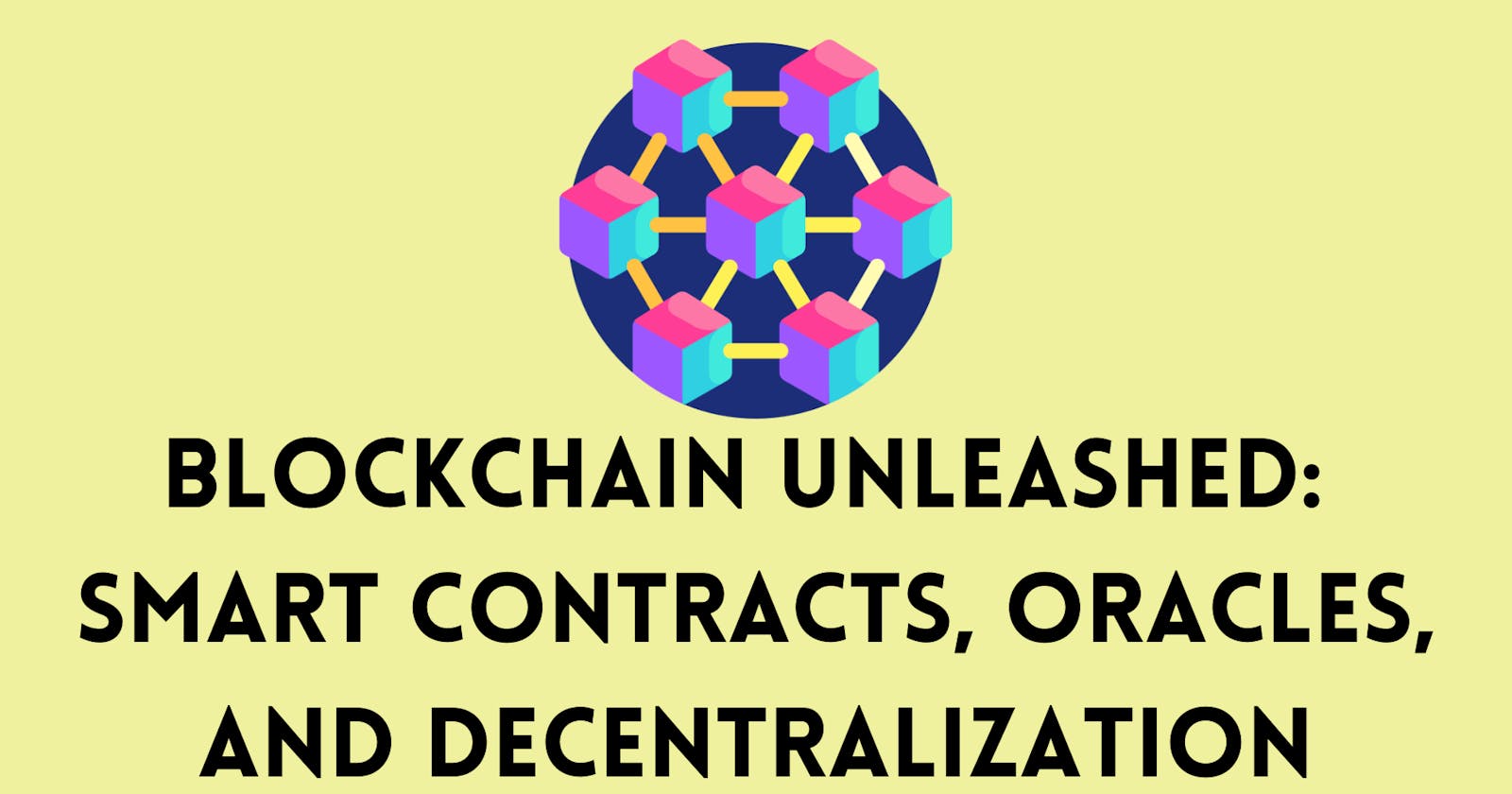Beyond the Blocks: Exploring Smart Contracts, Oracles, and Decentralization on the Blockchain
Prelude
Blockchain, at its core, is a revolutionary technology that enables secure and transparent transactions. It is a decentralized and immutable ledger that records every transaction across a network of computers, eliminating the need for a central authority.
At the heart of blockchain lies smart contracts. These self-executing contracts contain predefined rules and conditions that automatically execute and enforce agreements without intermediaries. By removing the reliance on centralized entities, smart contracts enable trust-minimized interactions and open up endless possibilities for innovation.
In this exploration, we'll unravel the differences between Bitcoin and Ethereum, understand the concept of Turing incompleteness, and delve into the Oracle Problem. We'll also discover the power of hybrid smart contracts and explore the blockchain-agnostic nature of solutions like Chainlink.
Furthermore, we'll discuss Decentralized Applications (DApps), which leverage smart contracts to create new paradigms in finance, supply chain management, governance, and more. We'll also delve into the value that smart contracts bring by providing unbreakable promises and transparent agreements, addressing critical trust issues in various sectors.
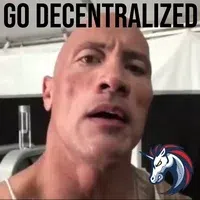
Web1 v/s Web2 v/s Web3

Web1 represents the early days of the internet when websites mainly consisted of static information interconnected through hyperlinks. Imagine having your own self-hosted web page or blog using platforms like WordPress or Squarespace. Sharing information with others was primarily done through URLs, allowing users to navigate and access specific content.
Web2 emerged as a more interactive and social web experience where users connect with each other through various social media platforms like Instagram and Twitter. These platforms curate personalized data feeds using algorithms, enabling users to share, like, repost, and engage with content within the platform itself.
Web3 introduces a paradigm shift by embracing decentralization and leveraging public ledgers, such as blockchain ecosystems. In this context, imagine participating in the buying or selling of an NFT artwork where the entire history of past owners and transaction details are recorded on the blockchain. Users interact with this chain of information primarily through digital wallet transactions, gaining transparency and trust in the process.
Each iteration of the web has its own unique characteristics and implications for how information is shared, consumed, and accessed. Understanding the distinctions between Web1, Web2, and Web3 helps us navigate the evolving landscape of the Internet and explore the exciting possibilities it holds.

Smart Contracts
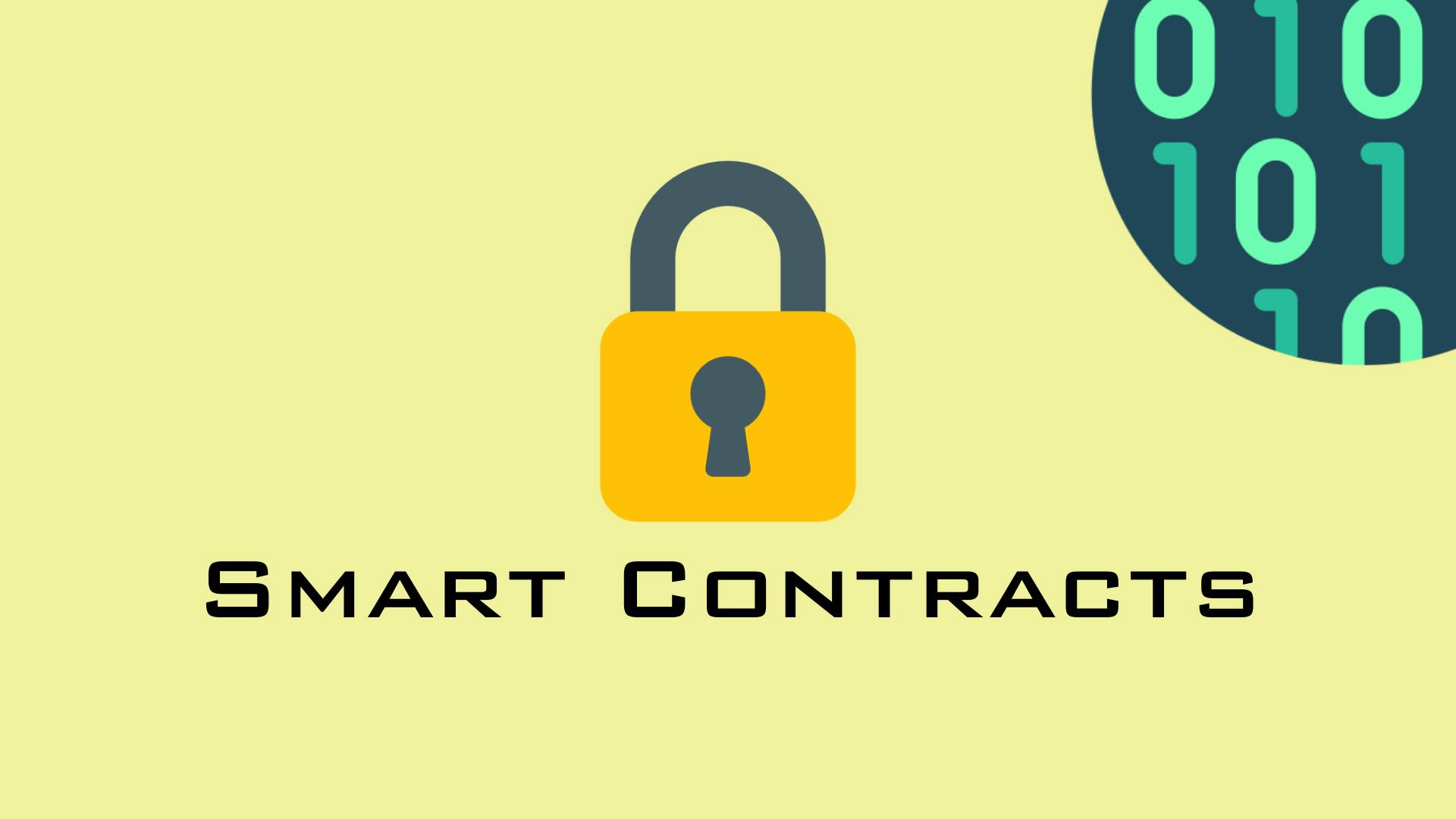
Smart contracts are self-executing computer programs that run on the decentralized network of a blockchain platform. They are designed to automatically execute the terms of an agreement once certain predefined conditions are met. Unlike traditional contracts, smart contracts are programmed to eliminate the need for intermediaries, such as banks, lawyers, or notaries. This decentralization of the execution and verification process ensures a secure and transparent transaction for all parties involved.
The definition and execution of smart contracts are fully decentralized. Once a contract is created, it is deployed on the blockchain network and becomes a permanent part of the blockchain's ledger. Once the predefined conditions of the contract are met, the code of the contract executes automatically without the need for any human intervention. The results of the contract execution are then recorded on the blockchain and cannot be altered.
Elimination of centralized or third-party intermediaries is a major advantage of smart contracts. Traditional contracts require intermediaries to oversee the execution process, which can lead to additional costs, delays, and potential fraud due to the involvement of human error or corruption. On the other hand, smart contracts use blockchain technology to automatically execute and enforce the terms of an agreement in a transparent and tamper-proof manner. This eliminates the need for intermediaries, resulting in faster and more cost-effective transactions.
Furthermore, smart contracts are highly secure due to their decentralized nature. The blockchain's distributed ledger ensures that all parties involved have access to the same information and can verify the legitimacy of the transaction. This security feature makes smart contracts ideal for sensitive transactions, such as financial transactions or the transfer of valuable assets.
In a Nutshell, smart contracts are revolutionary computer programs that provide a secure and transparent way of executing transactions without the need for intermediaries. Their decentralized nature ensures the elimination of potential risks of human error, fraud, and corruption, making them an ideal solution for sensitive transactions. Smart contracts are a prime example of how blockchain technology can transform the way we transact and interact with each other in a globally connected economy.
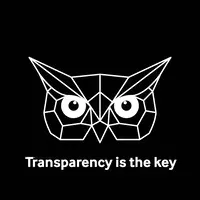
Difference between Bitcoin and Ethereum
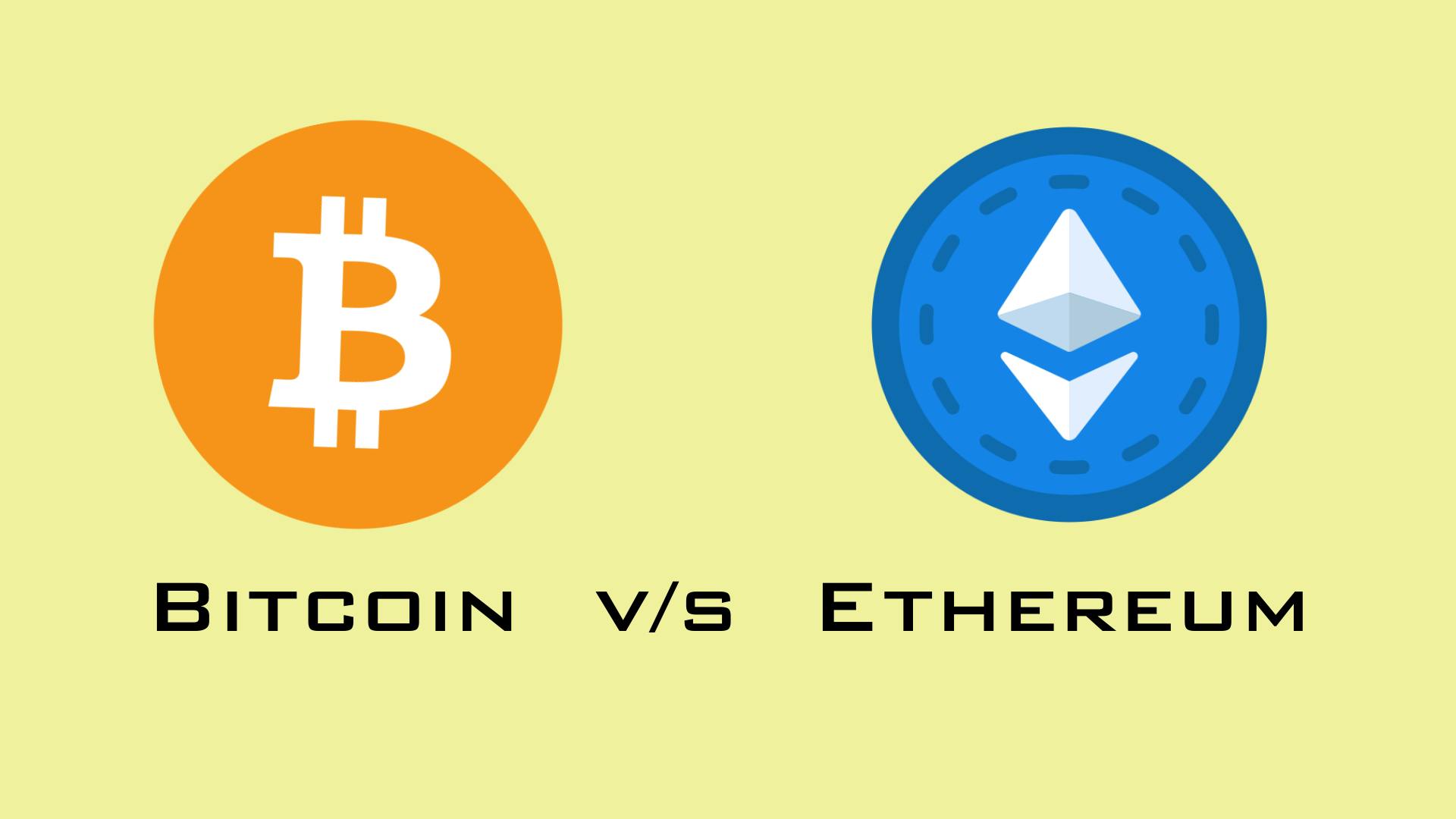
Bitcoin and Ethereum are two of the most popular cryptocurrencies in the world as of now. While both are based on blockchain technology, they differ in several ways.
One of the main differences between Bitcoin and Ethereum is their purpose. Bitcoin was designed as a peer-to-peer electronic cash system in 2008 by Satoshi Nakamoto(name used by the presumed pseudonymous person or persons who developed Bitcoin). It was created to provide an alternative to traditional banking systems that rely on third-party intermediaries for transactions. On the other hand, Ethereum was created in 2015 by Vitalik Buterin. It was designed to be a platform for developing decentralized applications (dApps) using smart contracts.
Another significant difference between the two cryptocurrencies is their underlying technology. Bitcoin uses a Proof-of-Work (PoW) consensus algorithm to validate transactions and add new blocks to the blockchain. Ethereum, on the other hand, uses a Proof-of-Stake (PoS) algorithm to achieve consensus. This difference in technology is also reflected in their transaction speeds. Bitcoin can handle up to 7 transactions per second (tps), whereas Ethereum can handle up to 15 tps.
Turing Incompleteness of Bitcoin
Turing incompleteness is a term used to describe the limited functionality of Bitcoin's programming language. Bitcoin's scripting language is intentionally limited to prevent malicious code from being executed on the network. While this design makes Bitcoin more secure, it also restricts the types of smart contracts that can be executed on its blockchain. Bitcoin's scripting language is not Turing complete, which means it cannot perform arbitrary computations like Ethereum's Solidity programming language.
Ethereum's Smart Contract capabilities and Turing completeness allow for the creation of more sophisticated smart contracts, making it a preferred platform for developing decentralized applications. Smart contracts on Ethereum can handle more complex operations and computations, including the creation of new tokens, the implementation of complex algorithms, and the creation of decentralized organizations, to name a few.
While both Bitcoin and Ethereum are based on blockchain technology, they differ in their purpose, underlying technology, transaction speeds, and programming language capabilities. Ethereum's Turing completeness gives it the flexibility to create more sophisticated smart contracts, making it a more versatile platform for developing decentralized applications.
The Oracle Problem

The Oracle Problem refers to the challenge of integrating real-world data with blockchain networks, which relies on trust-minimization and, hence, does not have a reliable mechanism to verify external data. Blockchains usually have a closed environment where they only rely on cryptographic proof and internal on-chain data for executing smart contracts. However, decentralized applications require external data to process complex transactions that reflect real-world events.
The primary issue with blockchain networks is that they don't have an inherent mechanism to verify external data. This is where oracles come into the picture. Oracles act as an interface between a blockchain network and external data sources. They fetch and verify real-world data and then feed it to the blockchain. There are a few approaches to resolving the oracle problem, such as using trusted third party oracles, consensus-based oracles, or even incentivized oracles.
Deterministic nature of Blockchains
Another inherent challenge with blockchains is their deterministic nature. The deterministic nature implies that once a block is added to a blockchain, it cannot be altered, and the outcome of any smart contract execution is predictable and consistent. This characteristic is crucial for blockchain security and immutability. However, it also comes with limitations when it comes to handling non-deterministic events in the real world.
To handle deterministic limitations, blockchain developers have implemented oracles and external adapters to fetch and verify real-time data and use it to modify smart contracts' deterministic environment. This enables blockchain networks to interact with real-world data while maintaining the security and immutability of blockchain's inherent nature.
In a nutshell, the oracle problem is the challenge of integrating real-world data with blockchain systems, and blockchain's deterministic nature can limit its ability to interact with the real world. Still, oracles and other mechanisms can be used to overcome these challenges.
Blockchain Oracle
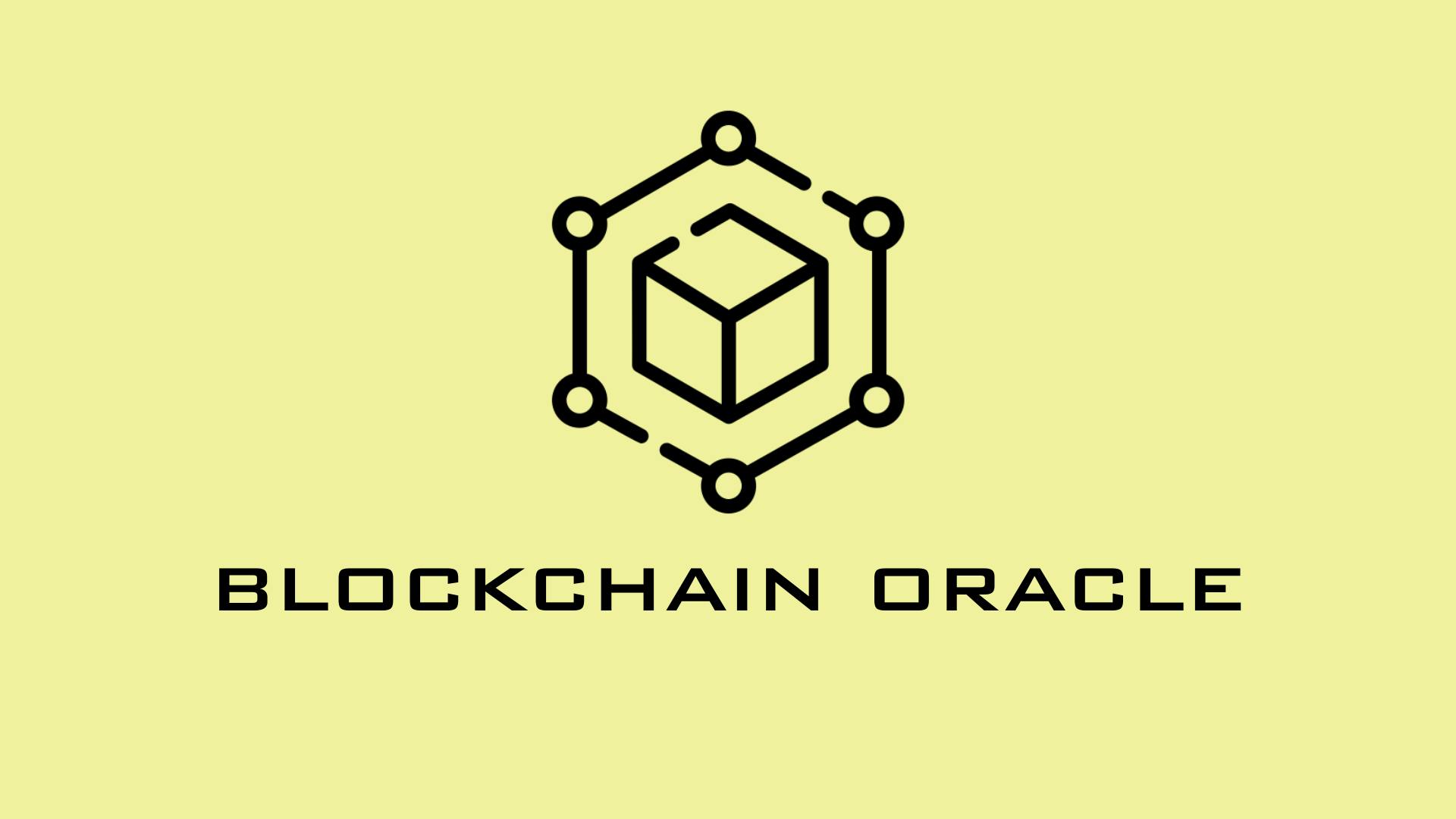
A Blockchain Oracle is a mechanism used to integrate external data with blockchain networks. It acts as an interface between a blockchain and external data sources such as APIs, web applications, and databases. Oracles are responsible for providing information that is not available on the blockchain network itself.
The role of a blockchain oracle is to provide external data or computation to smart contracts, however, smart contracts are only able to execute based on the information within the blockchain network itself. If a smart contract needs information from an external source, such as the current price of cryptocurrency or weather data, an oracle can help fetch and verify that data and feed it to the smart contract.
Oracles use a variety of methods to provide external data. Some can use trusted data sources, others use multiple oracles to verify data, and some even use cryptographic algorithms to ensure data validity. Once the oracle verifies the data, it can feed it to the smart contract, allowing it to execute based on external events and reach conclusions based on that information.
Basically, Oracles play a crucial role in enabling blockchain networks to interact with the outside world, allowing for more complex and powerful smart contract applications. Oracles can also be used for other purposes, such as triggering payments based on external events, executing complex computations, and providing data for analytics purposes.
In conclusion, blockchain oracles serve as a bridge between blockchain networks and external data sources, enabling smart contracts to execute based on real-world events. They play a crucial role in the efficiency, transparency, and security of decentralized applications.
Hybrid Smart Contracts
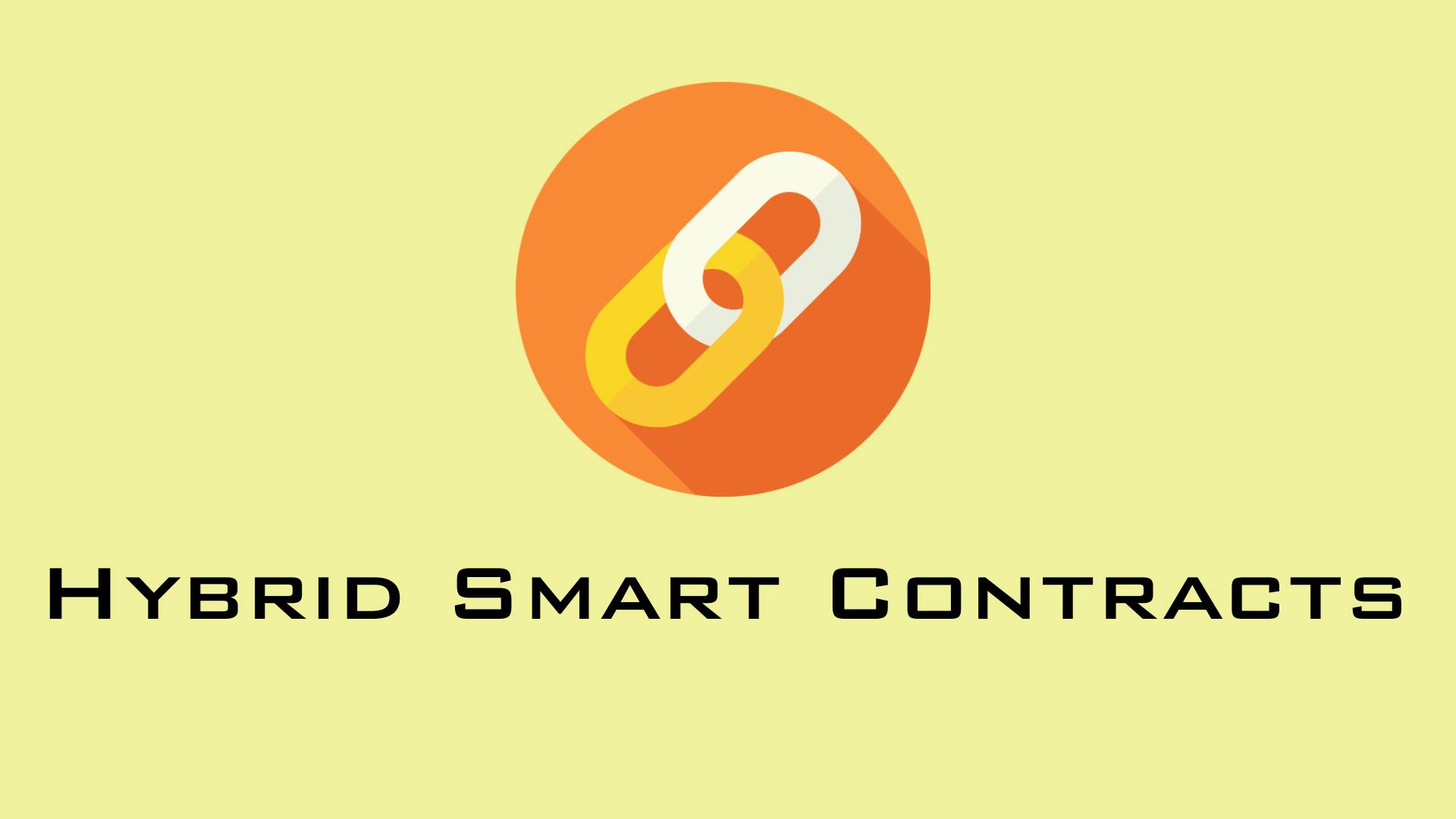
Hybrid Smart Contracts are blockchain-based applications that utilize both on-chain and off-chain code to execute complex tasks, combining the security and transparency of an on-chain smart contract with the flexibility of off-chain computing. They enable the development of decentralized applications that can handle complex business logic, update data off-chain while maintaining on-chain integrity, and communicate with external systems.
One significant advantage of Hybrid Smart Contracts is their ability to switch between different blockchain networks with minimal code changes. This feature allows developers to change their blockchain network of choice without having to rewrite or modify the entire codebase.
For example, a Hybrid Smart Contract built on Ethereum can easily be migrated to another blockchain platform, such as Binance Smart Chain, with minimal modifications to the off-chain code. This flexibility makes it easier for developers to adapt to changing market conditions and choose the platform that best suits their needs.
Chainlink
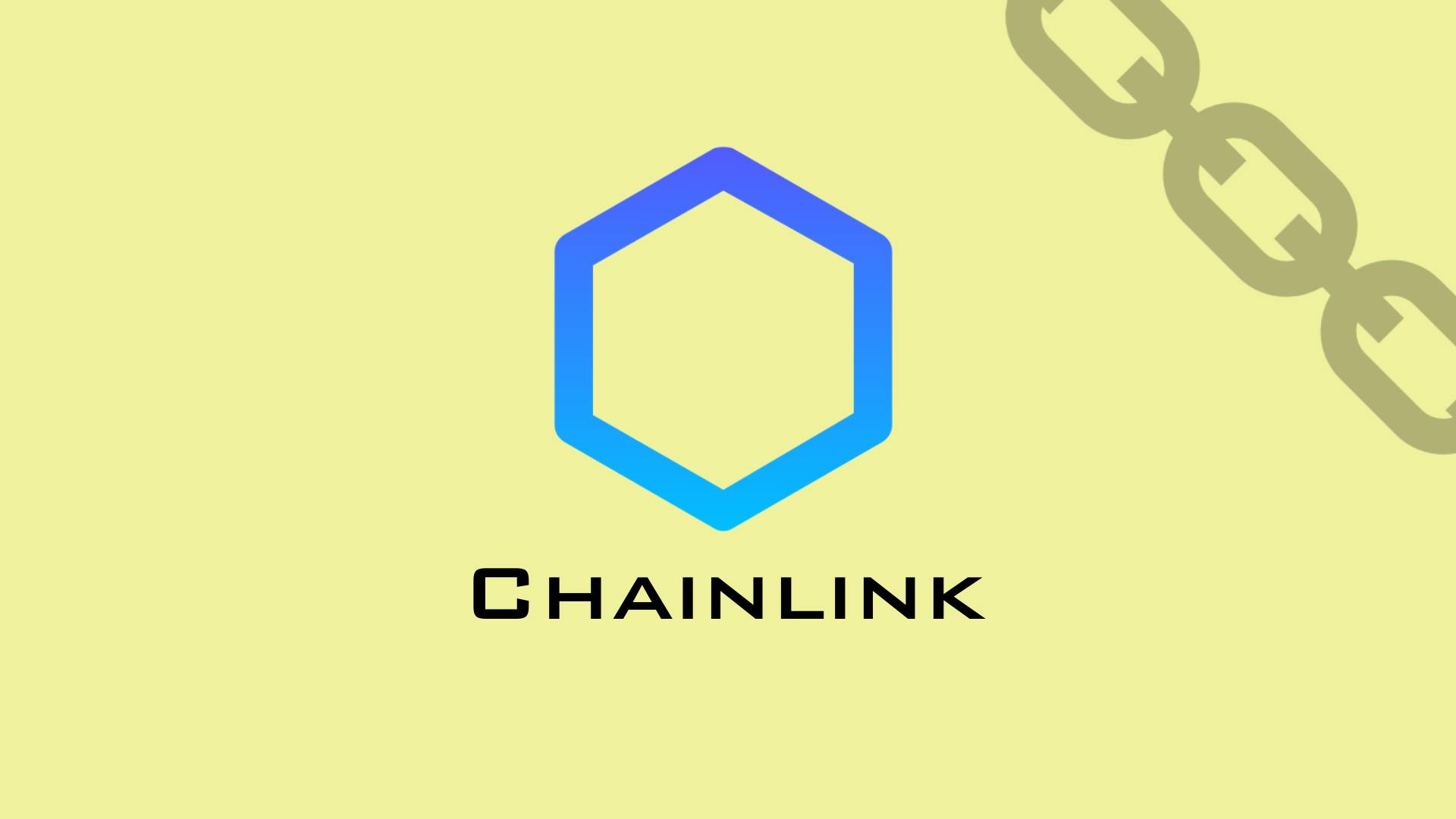
Chainlink is a decentralized oracle network that connects smart contracts to external data sources and APIs. Its goal is to provide reliable and tamper-proof inputs and outputs to smart contracts by bridging the gap between blockchains and the outside world.
Chainlink's blockchain agnosticism allows it to be compatible with various blockchain platforms, including Ethereum, Solana, Avalanche, Polygon, etc. Its decentralized oracle network consists of multiple nodes that provide data to a smart contract, ensuring that the data is accurate and secure. This also makes it resilient to censorship and failure of any individual node, as the network relies on a decentralized consensus mechanism.
One of Chainlink's significant advantages is its introduction of "off-chain" data to smart contracts, which traditionally could only access on-chain data. The decentralized oracle network allows developers to use external data sources, such as APIs and IoT devices, to trigger contract execution. This capability opens up a vast array of use cases beyond the on-chain world.
Chainlink has become increasingly popular in the DeFi ecosystem, where the need for accurate and reliable data is crucial. Its compatibility with various blockchain platforms has made it a go-to oracle solution for many developers looking to build decentralized applications that interact with real-world data.
DApps

Decentralized Applications (DApps) are software applications that run on a decentralized peer-to-peer network rather than being controlled by a single centralized entity. They are designed to be trustless and transparent, allowing users to interact with each other without the need for intermediaries.
DApps are typically associated with decentralized protocols and smart contracts, and they leverage the blockchain technology to secure transactions and data. Smart contracts are self-executing contracts that are stored on the blockchain and automatically execute when certain conditions are met. Decentralized protocols provide a peer-to-peer network infrastructure that allows users to interact with each other in a decentralized way.
DApps often combine multiple smart contracts to provide a broader suite of functionality. For example, a decentralized lending DApp might consist of smart contracts for collateralization, borrowing, and repayment. These smart contracts would interact with each other to facilitate the lending process, and the DApp would provide a user interface for users to interact with the smart contracts.
One of the key advantages of DApps is that they are censorship-resistant and can operate without the need for intermediaries. This makes them ideal for applications that require trustless interactions between users, such as decentralized marketplaces or prediction markets. DApps have also gained popularity in the DeFi ecosystem, where they provide users with access to financial services in a decentralized and trustless manner.
Value of Smart Contracts
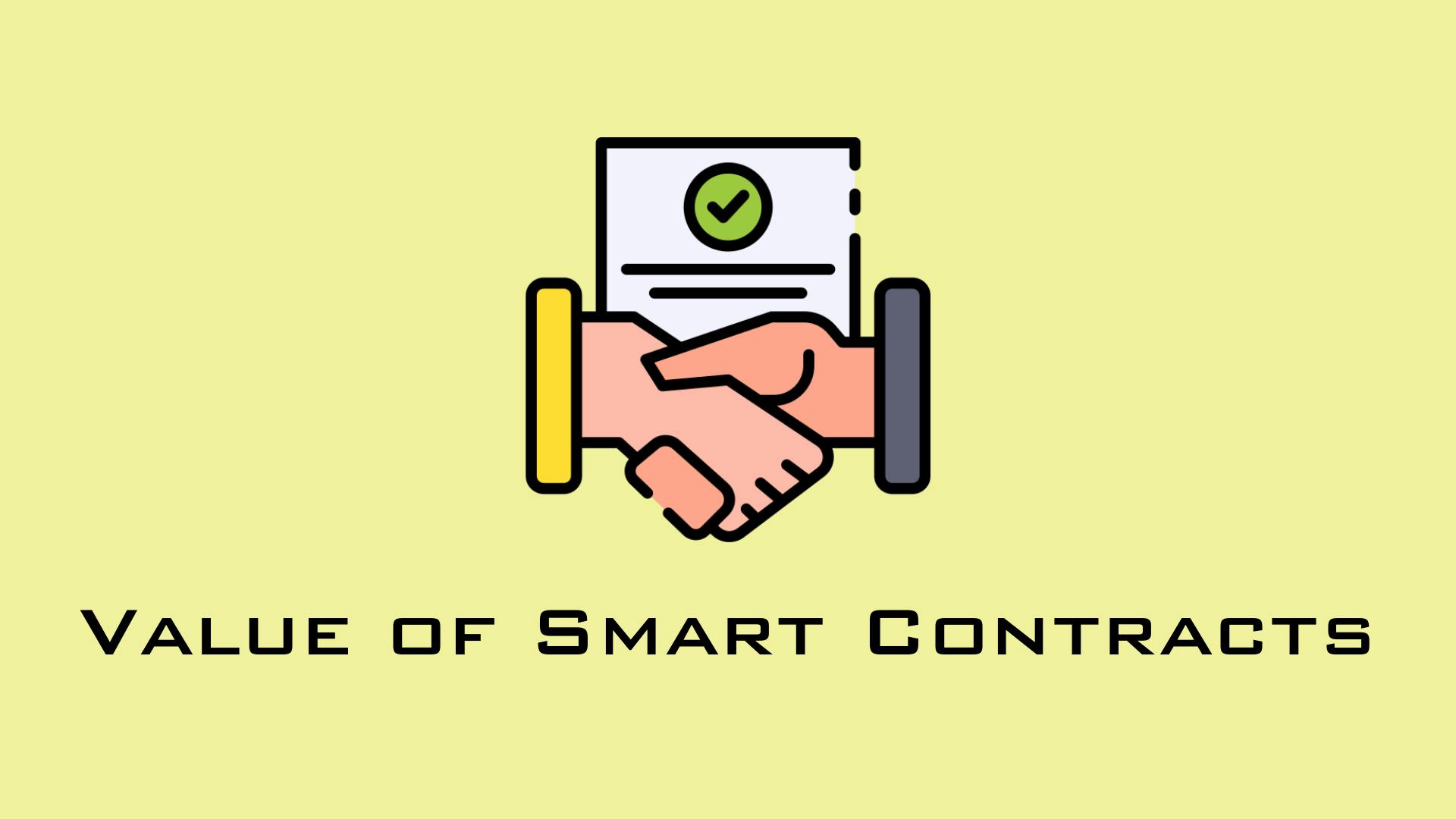
Smart contracts bring a wealth of advantages and hold great significance in various areas. They serve a purpose of enabling decentralized and automated agreements and transactions, bypassing the need for intermediaries. By leveraging blockchain technology, smart contracts offer trust-minimized agreements, where promises made are unbreakable, and the execution is transparent.
Smart contracts tackle several challenges often faced with traditional agreements. They eliminate the reliance on middlemen, resulting in cost reduction and increased efficiency. Automation through smart contracts ensures accuracy, minimizes human errors, and removes the possibility of tampering or manipulation, providing reliable outcomes.
Operating on a blockchain, smart contracts embrace transparency, immutability, and decentralization. This fosters an environment where agreements are established with minimal trust required. Once deployed, smart contracts become unbreakable promises since the code cannot be altered, and the execution follows a predetermined set of rules.
Think of a vending machine as a relatable analogy for smart contracts. When you insert the correct amount of money and make a selection, the machine automatically delivers the chosen product. The machine's programming ensures that you receive the product if the conditions are met, such as the right payment and available stock. Similarly, smart contracts execute transactions or actions when specific conditions are fulfilled, eliminating the need for an intermediary.
Let's consider a real estate transaction where buyers typically rely on paper documents and trust. This scenario opens the door to potential fraudulent activities like forged ownership papers or double-selling properties. However, by leveraging blockchain and smart contracts, the entire transaction history, including ownership records, is recorded and verified transparently. This powerful solution prevents fraud by providing an unchangeable, decentralized, and transparent agreement that all involved parties can trust.
Smart contracts offer tremendous potential in revolutionizing various industries, from finance to supply chain management and healthcare. By embracing this technology, we can create a more efficient, transparent, and trustworthy digital landscape that transforms the way we conduct business.
Smart Contracts and the Society

In today's society, trust is a vital component of our interactions and agreements. Smart contracts emerge as a powerful solution, addressing critical trust issues that traditional methods often struggle to overcome. These innovative digital agreements offer a level of trust that goes beyond what can be achieved with traditional paper-based guarantees. Smart contracts provide cryptographic guarantees that are built upon the robust security of blockchain technology. These guarantees are based on mathematics, algorithms, and immutability, creating a tamper-proof and transparent system.
To truly grasp the significance of smart contracts, let's consider real-world examples. Imagine a scenario where a buyer purchases a used car from a seller. With traditional methods, trust must be established solely through paper documents and the seller's word. Unfortunately, this leaves room for potential fraud or misrepresentation.
Now, picture the same transaction powered by smart contracts. The entire history of the car, including previous owners, maintenance records, and accident reports, is securely stored on a blockchain. The buyer can easily access this information, ensuring transparency and trust. The smart contract automates the transfer of ownership and funds, eliminating the need for intermediaries and reducing the risk of fraud.
By harnessing the power of smart contracts, we can create a society where critical trust issues are minimized. These digital agreements enhance transparency, reduce the need for intermediaries, and offer a higher level of security. As we continue to embrace this technology, we unlock a world of possibilities, revolutionizing how we establish trust in various aspects of our lives.
DeFi
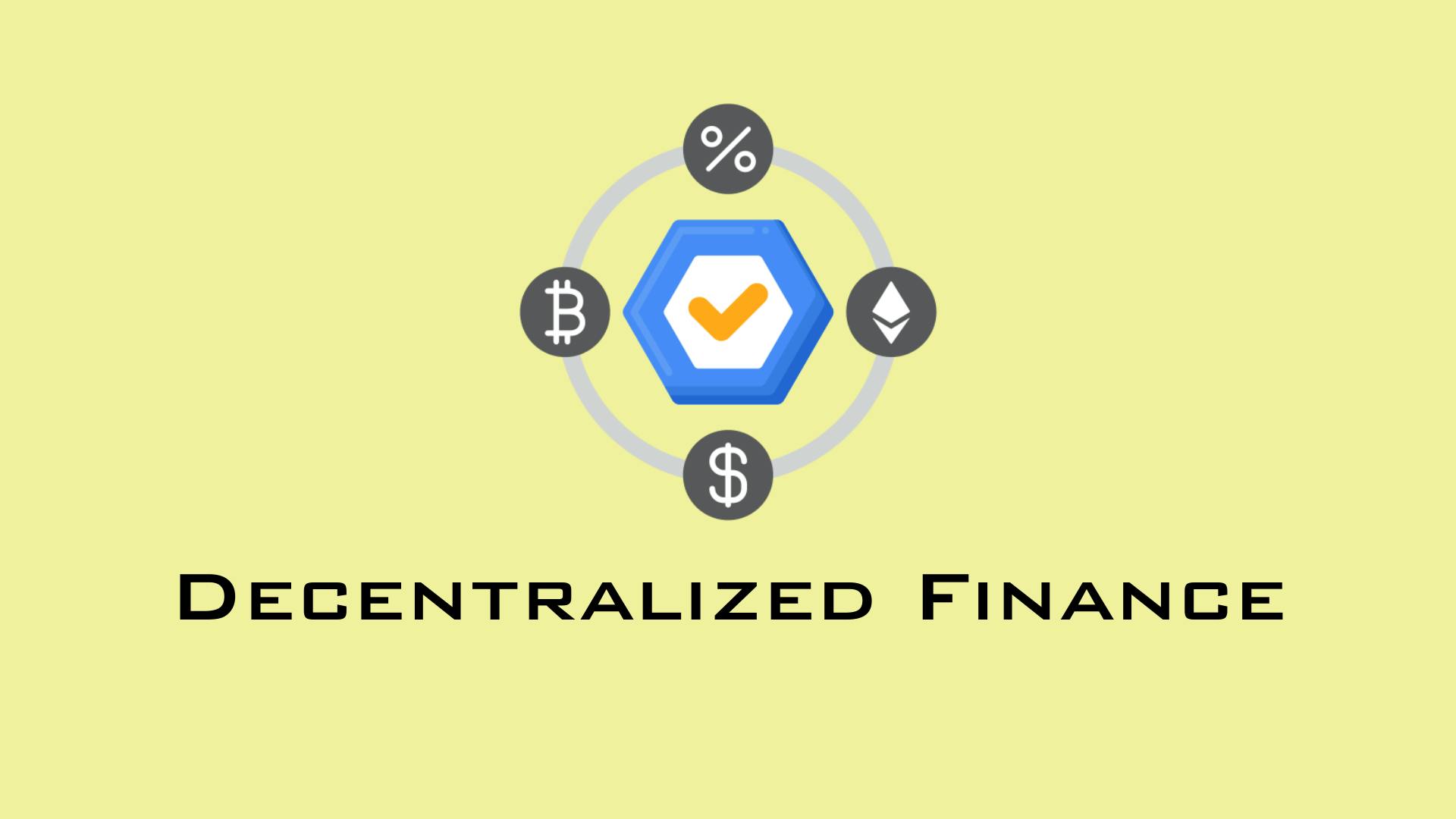

In recent years, Decentralized Finance (DeFi) has emerged as a groundbreaking concept within the blockchain ecosystem. It represents a shift towards a more open, accessible, and inclusive financial system that operates without the need for traditional intermediaries.
At its core, DeFi leverages the power of blockchain technology to provide financial services and products in a decentralized manner. By utilizing smart contracts and decentralized applications (DApps), DeFi aims to democratize financial services, offering individuals greater control over their assets and eliminating barriers to entry.
The role of DeFi in the blockchain ecosystem is to reimagine and transform various aspects of traditional finance. It enables users to access lending and borrowing platforms, trade digital assets, participate in decentralized exchanges (DEXs), and earn interest through yield farming and liquidity provision. All of these operations occur directly between users, cutting out middlemen and reducing associated costs.
DeFi opens up new opportunities for individuals around the world, particularly those who are unbanked or underserved by traditional financial systems. It allows them to access financial services without relying on banks or other centralized institutions, promoting financial inclusivity and empowerment.
However, it's important to note that while DeFi offers exciting prospects, it also comes with risks. The nascent nature of the DeFi space poses challenges such as smart contract vulnerabilities, liquidity risks, and regulatory considerations. Therefore, individuals should exercise caution, conduct thorough research, and assess the risks involved before participating in DeFi platforms.
As the DeFi ecosystem continues to evolve, it holds the potential to reshape the way we engage with and experience finance, ultimately empowering individuals to take greater control over their financial lives.
As we conclude our exploration of blockchain technology, we see the immense potential of smart contracts and decentralized finance (DeFi). Smart contracts offer secure, transparent, and efficient interactions, reducing fraud and reliance on intermediaries. Real-world examples demonstrate their impact in solving trust issues and empowering individuals. Meanwhile, DeFi revolutionizes finance, providing accessible and inclusive services powered by blockchain. Despite challenges, navigating this space with caution unlocks its transformative potential. Together, we can shape a future where trust is inherent, promises are unbreakable, and our digital interactions are transparent and empowering.
Hope you had a good reading experience.
Feedback in the comment section would be immensely appreciated!
Connect with me on my socials:
Twitter: https://twitter.com/utkarshktweets
LinkedIn: https://www.linkedin.com/in/utkarsh-krishna-3bab41240
GitHub: https://github.com/utkarshkrishna2004
Alright folks, that's all from my side.
This is Utkarsh Krishna
Signing-Off
Cheers :)

